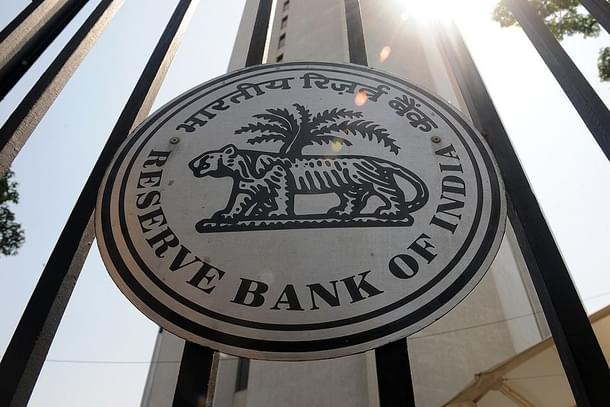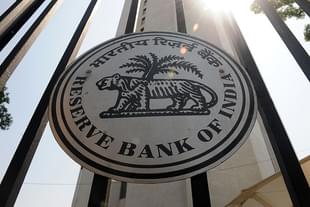Economy
RBI Must Grow Up: It Must Stop Playing Scrooge With Private Banking Licences
R Jagannathan
Mar 25, 2021, 12:14 PM | Updated 12:11 PM IST
Save & read from anywhere!
Bookmark stories for easy access on any device or the Swarajya app.


The setting up of a standing external advisory committee (SEAC) under former Reserve Bank Deputy Governor Shyamala Gopinath tells us that the central bank may be about to open the tap for new banking licences. However, if past reticence is any guide, don’t hold your breath.
The issue of private banking licences was liberalised in 1993, but it took the RBI 10 more years to issue one additional licence to Kotak Mahindra Bank; it took the central bank 10 more years to issue two more licences, to IDFC First Bank and Bandhan Bank.
Giving new licences in homoeopathic doses is not the right way to build greater competition and efficiency in the banking system. This is not the “on-tap” licensing regime promised as far as the middle of the last decade.
The experience with payment and small finance banks is now more than five years old. The only thing the RBI’s over-cautious approach to payments banks, which was open even to the corporate sector, was to drive them out. All payments bank licence-holders now want to become small finance banks.
Stifling regulation made all payment banks unviable, and the nomenclature “bank” itself became meaningless when applied to an entity that could not lend at all. What the RBI created was small deposit-taking entities with payments capabilities, thus constricting their ability to grow profitably. While non-banks launched scores of private wallets that performed the same function, the payments banks themselves are migrating to the slightly greener shores of small finance banking.
The same cussed regulatory predilections practically killed off the booming microfinance sector in the last decade. Following over-lending in the Andhra Pradesh market, the RBI imposed mindless interest rate ceilings and rules that made the servicing of small borrowers and loan recoveries difficult. When loan sizes are small, collection costs are high, and interest rate ceilings have to be liberal.
Extreme cases make for bad law, and this is exactly what the RBI is guilty of.
The RBI’s over-caution has partly be understood through its history. In the pre-bank nationalisation period, many big business groups were found to be lending to their own group entities, thus making lending unsafe. Post-liberalisation, the 1992 Harshad Mehta scam, and the post-2000 Ketan Parekh and Global Trust Bank scams made the RBI even more wary.
Like a child that put its hands on a hot vessel and then turns permanently scared of any vessel, the RBI’s regulatory impulses operate on the basis of fear and suspicion that private corporations cannot be trusted with banking licences as they can be “misused”.
That it was the public sector banks which made the most injudicious loans to bankrupt companies – all now in the sick bay of the National Company Law Tribunals – does not seen to have bothered the central bank as much as the thought that private banks may “divert” loans to related entities, and bring on a systemic crisis.
The same fears and suspicion force the RBI to promulgate mindless rules like the amount of equity private promoters of banks can hold, when the same rules don’t apply to quasi-banks like non-bank finance companies (NBFC) that do much the same thing. The RBI’s Pavlovian response to the IL&FS loan defaults has been to make NBFC regulations even tougher.
At some point, the rules that govern NBFCs and banks may converge, just as the convergence of payment banking and wallet rules got one group out of the business. Worse, the RBI already mandates that NBFCs which get bank licences have to give up their existing non-bank licences. This is like saying that if you grow wheat, you must give up horticulture.
The RBI needs to grow up. There is space in the Indian financial sector for both NBFCs and banks, and even if they coexist in the same promoter entity, there is scope for synergy, not conflict. Just as HDFC, the non-bank housing finance company, can have harmonious ties with its banking subsidiary HDFC Bank, and ICICI Bank with its home finance subsidiary, there is actually no problem with any entity owning both a bank and an NBFC, as long as both are regulated by the same entity and listed on the stock markets.
The RBI has a “fit and proper” requirement for those being given banking licences, but right now this term is ill-defined and non-transparent. “Fit and proper” should be about creating a set of negative characteristics about a promoter (a habitual defaulter, or a promoter with risky side-businesses, etc). It can’t be roving rule under which groups like the Tatas, Birlas, TVS or Murugappa – all with relatively clean business records – are seen as problematic since they have too many industrial and services companies under their belt. The presumption will be that the bank cannot avoid lending to such entities since there are so many of them.
The “fit and proper” rule should be applied to delinquent promoters (say, a Nirav Modi or a Vijay Mallya, both of whom are evading Indian laws), not to groups that will often have at least some business failures. When you run scores of companies in a group, like the Tatas do, how is it realistically possible that a future Tata Bank will not lend – or need to lend - to a bankable company in the group.
The only way to make banking licences available on tap – something promised years ago by Raghuram Rajan – is for the RBI to ease the rules for the issue of new bank licences even while introducing smarter surveillance of lending. Today, with artificial intelligence, real-time data analytics and regular data flows from the Goods and Services Tax system, any smart regulator with private sector data analytics expertise will be able to stop hanky-panky as it happens.
The rules that need to go, especially when the government itself is thinking of privatising some of its banks, are the following.
One, limiting promoter holdings to 10-15 per cent does not make sense as long as the promoter has a reputation to lose. Consider the reputational damage a failing Birla Bank or Reliance Bank would cause to the group if it indulges in dubious lending practices and gets called out by the regulator.
It’s not as if the likes of State Bank, HDFC Bank and ICICI Bank have not been pulled up for violating some of the RBI’s rules. The attitude of the RBI should be to take a rational view of marginal violations and harsh views only for really dubious or dangerous lending. If the RBI cannot see itself monitoring these activities successfully, it should ask the Finance Ministry to set up an independent supervisory authority to track bad banking practices and dangerous lending.
Two, it makes no sense to issue new bank licences and then ask owners of NBFCs to convert themselves into banks, though some might indeed do so if the regulations are modified. HDFC, for example, may consider merging with its bank if the CRR/SLR rules were different. The NBFC structure has some advantages over banks, and banks over NBFCs in other areas. There is no reason why a smart promoter should not eat his NBFC cake and have it too in a bank. As long as both entities are subject to strong surveillance, both should be able to exist.
The RBI’s primary challenge is in monitoring new banks; playing Scrooge with licensing is a copout and not a positive way of meeting the new challenges and opportunities that opening up the field to innovation and competition will bring. The economy needs more competition in the finance space, and the RBI should be the last one trying to throttle it right at the start. It has done so for the last three decades; time for it to turn over a new leaf.
Financing a growing economy needs many more players willing to lend sensibly. Some will surely fail, but fear of failure cannot guide policy of new banking licences.
Jagannathan is former Editorial Director, Swarajya. He tweets at @TheJaggi.




